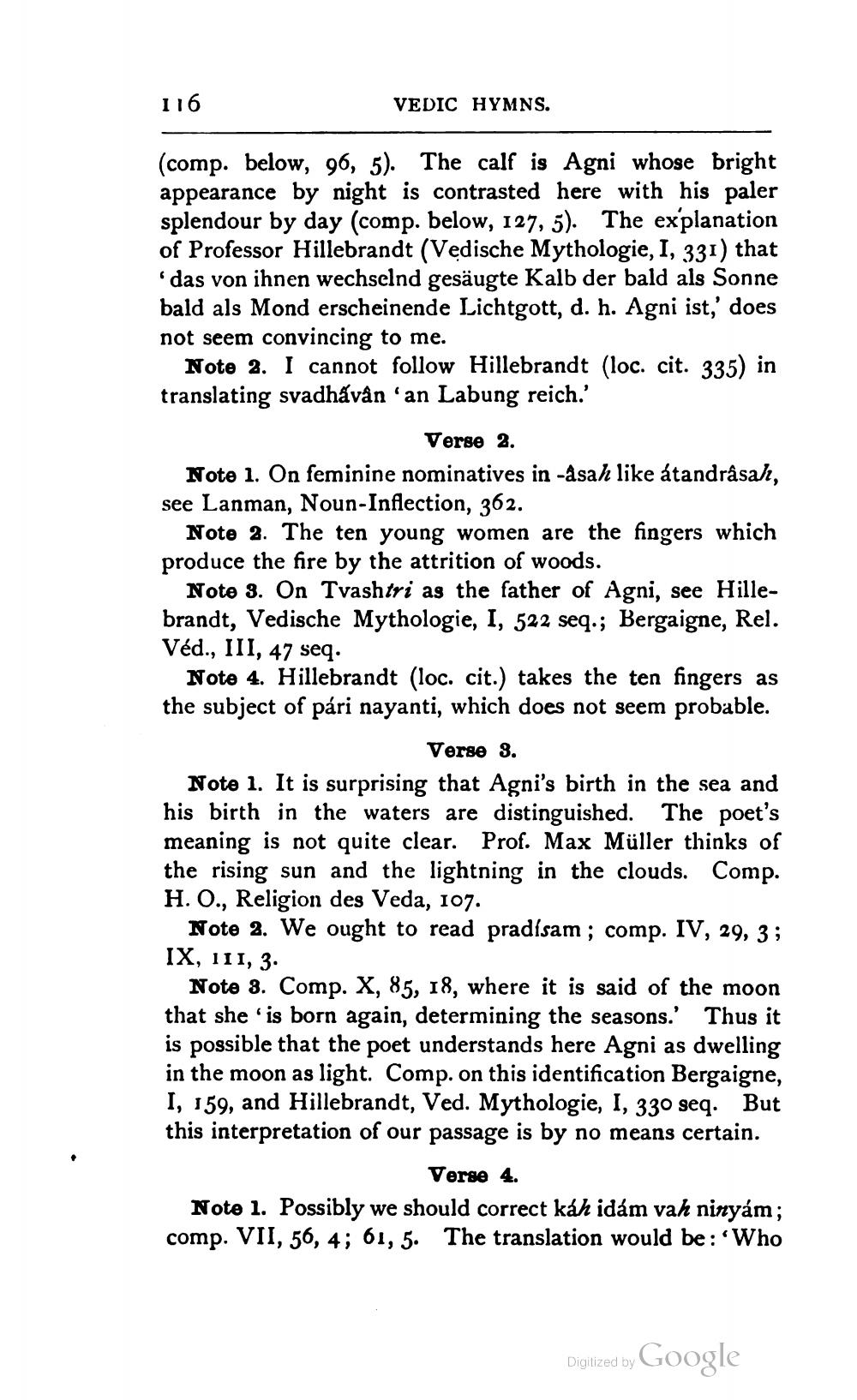________________
116
VEDIC HYMNS.
(comp. below, 96, 5). The calf is Agni whose bright appearance by night is contrasted here with his paler splendour by day (comp. below, 127, 5). The explanation of Professor Hillebrandt (Vedische Mythologie, 1, 331) that
das von ihnen wechselnd gesäugte Kalb der bald als Sonne bald als Mond erscheinende Lichtgott, d. h. Agni ist,' does not seem convincing to me.
Note 2. I cannot follow Hillebrandt (loc. cit. 335) in translating svadhấvån 'an Labung reich.'
Verse 2. Note 1. On feminine nominatives in -asah like átandrâsal, see Lanman, Noun-Inflection, 362.
Note 2. The ten young women are the fingers which produce the fire by the attrition of woods.
Note 3. On Tvashtri as the father of Agni, see Hillebrandt, Vedische Mythologie, I, 522 seq.; Bergaigne, Rel. Véd., III, 47 seq.
Note 4. Hillebrandt (loc. cit.) takes the ten fingers as the subject of pári nayanti, which does not seem probable.
Verse 3. Note 1. It is surprising that Agni's birth in the sea and his birth in the waters are distinguished. The poet's meaning is not quite clear. Prof. Max Müller thinks of the rising sun and the lightning in the clouds. Comp. H.O., Religion des Veda, 107.
Note 2. We ought to read pradísam ; comp. IV, 29, 3 ; IX, 111, 3.
Note 8. Comp. X, 85, 18, where it is said of the moon that she is born again, determining the seasons. Thus it is possible that the poet understands here Agni as dwelling in the moon as light. Comp. on this identification Bergaigne, I, 159, and Hillebrandt, Ved. Mythologie, I, 330 seq. But this interpretation of our passage is by no means certain.
Verse 4. Note 1. Possibly we should correct káh idám vah ninyám; comp. VII, 56, 4; 61, 5. The translation would be: Who
Digitized by Google




